Abstract
In a conditional discrimination, 6 college students arranged six Cyrillic letters into groups of three based upon which of two additional Cyrillic letters (contextual stimuli) was present. All subjects demonstrated symmetry and transitivity within each class of equivalent stimuli. In a second conditional discrimination, two more Cyrillic letters were related to each contextual stimulus. Testing of symmetrical and transitive relations between the original contextual stimulus and the two new ones confirmed the development of two three-member classes of contextual stimuli. Subsequent tests demonstrated that the new contextual stimuli controlled the previously trained sample–comparison relations for all subjects.
Keywords: stimulus classes, stimulus equivalence, contextual control, matching to sample, conditional discrimination, button press, adults
Full text
PDF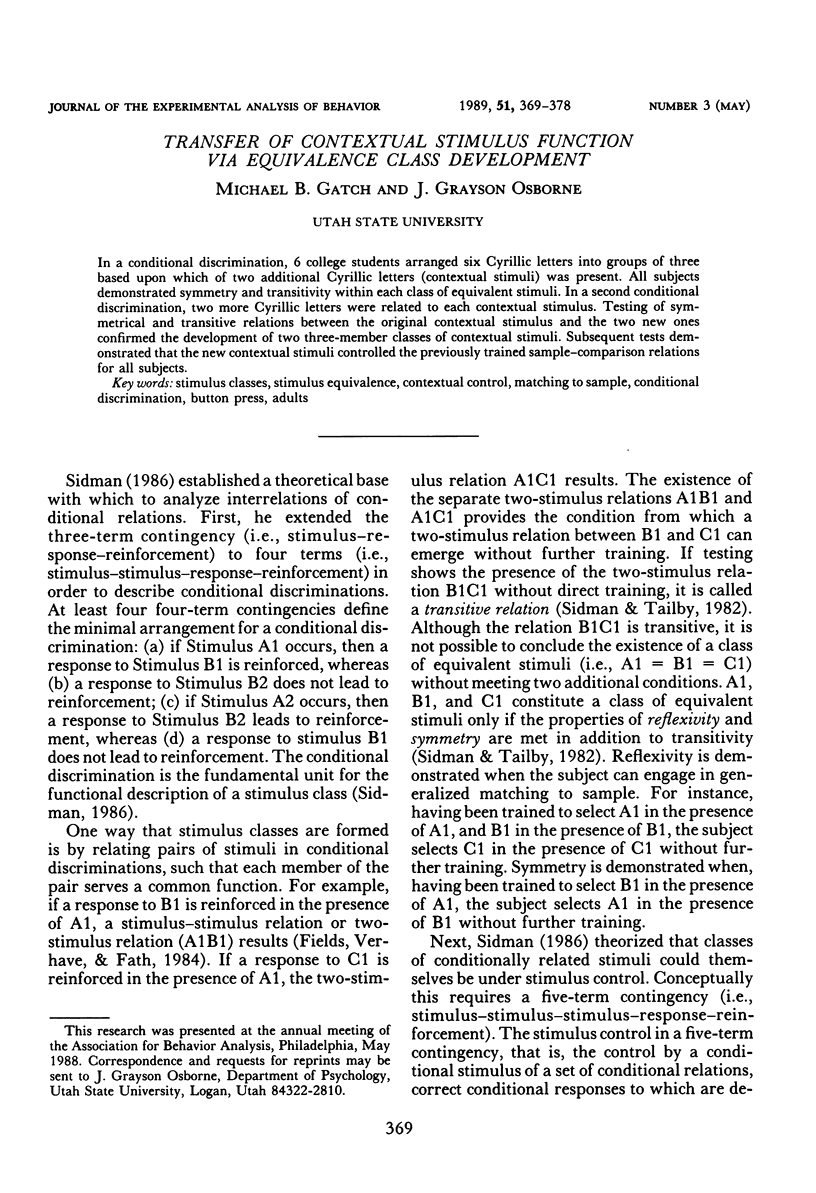
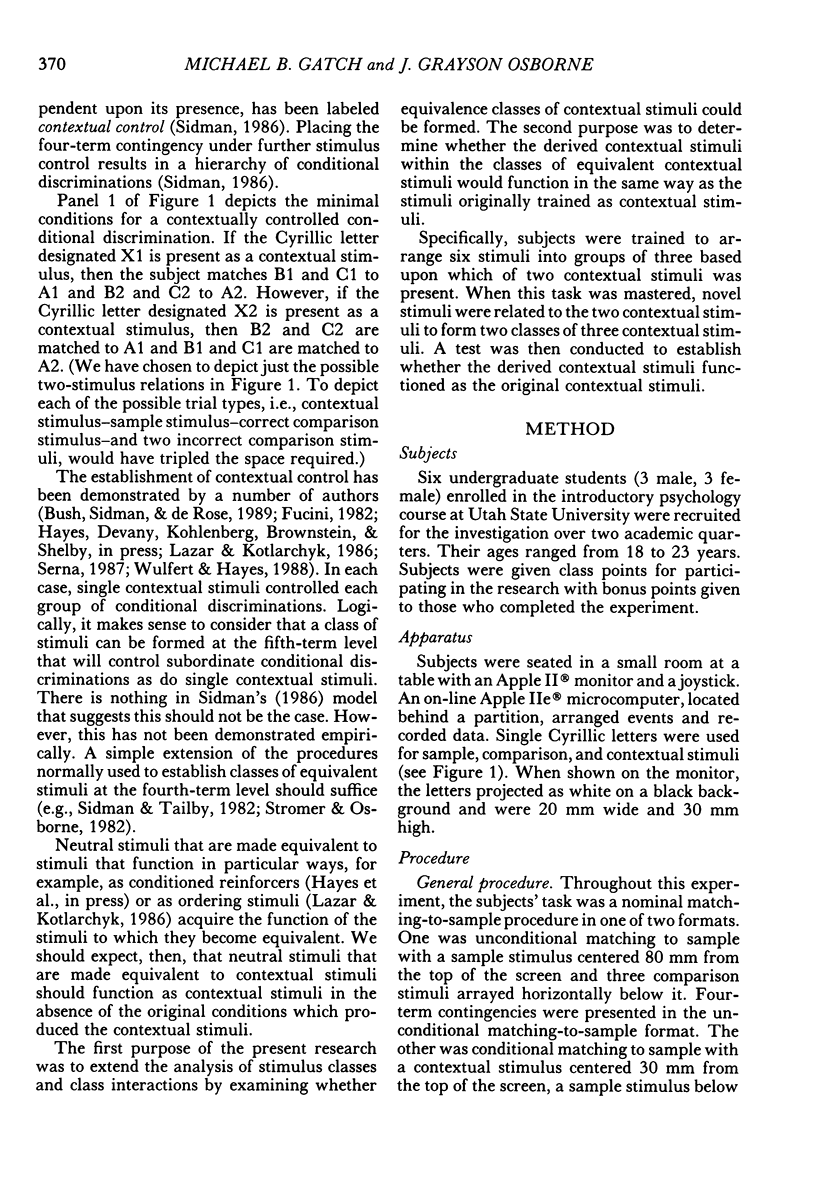


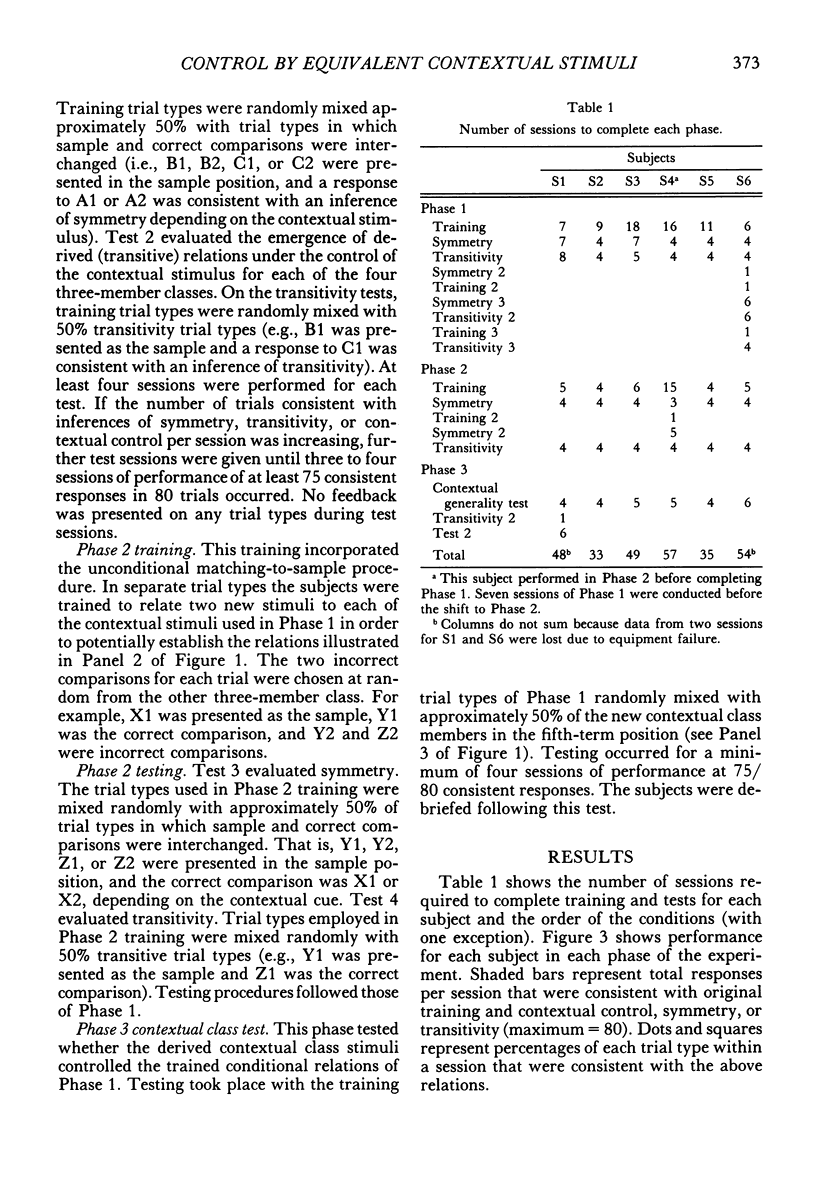
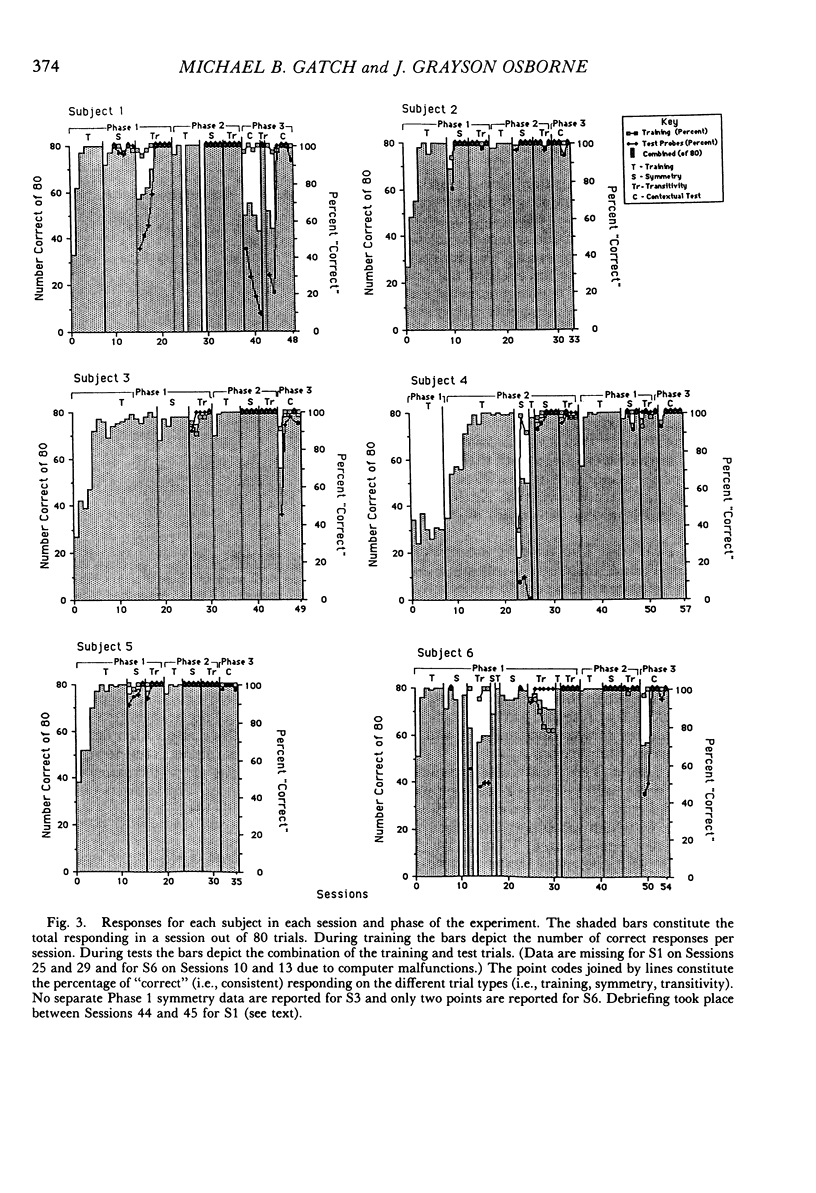
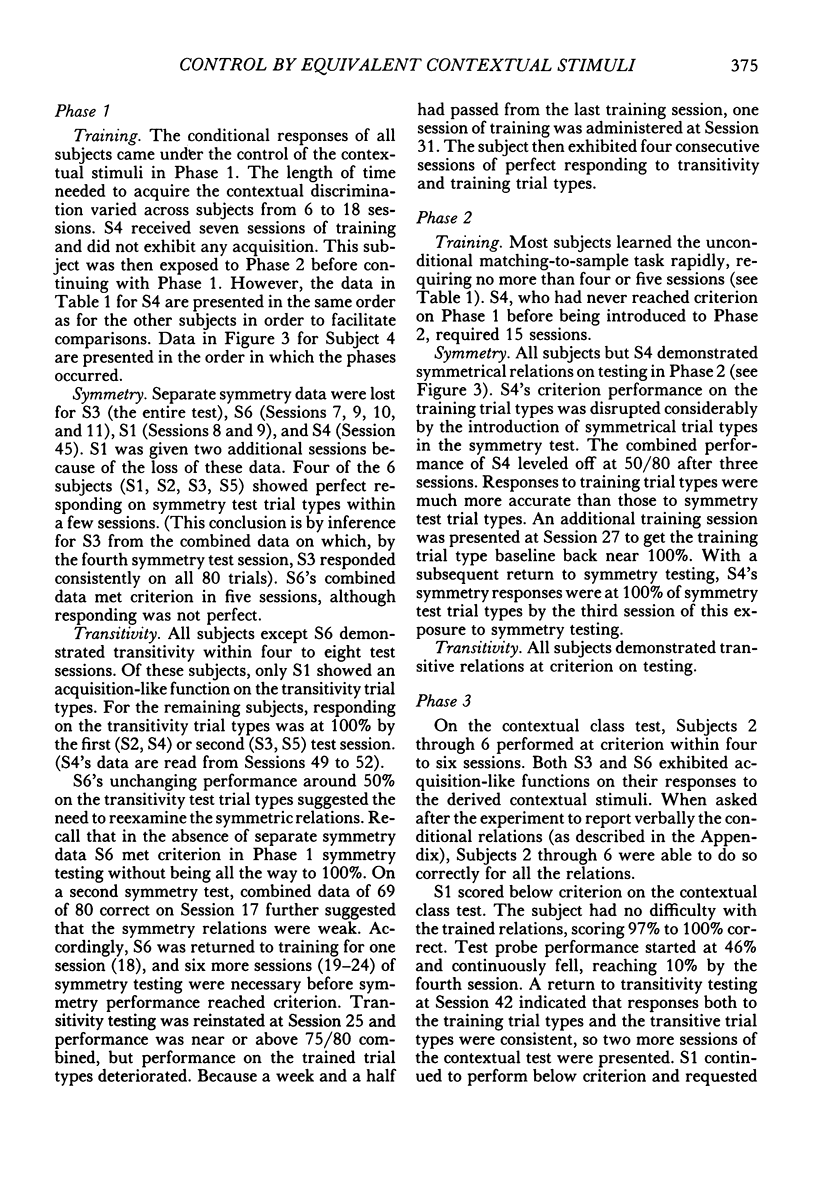

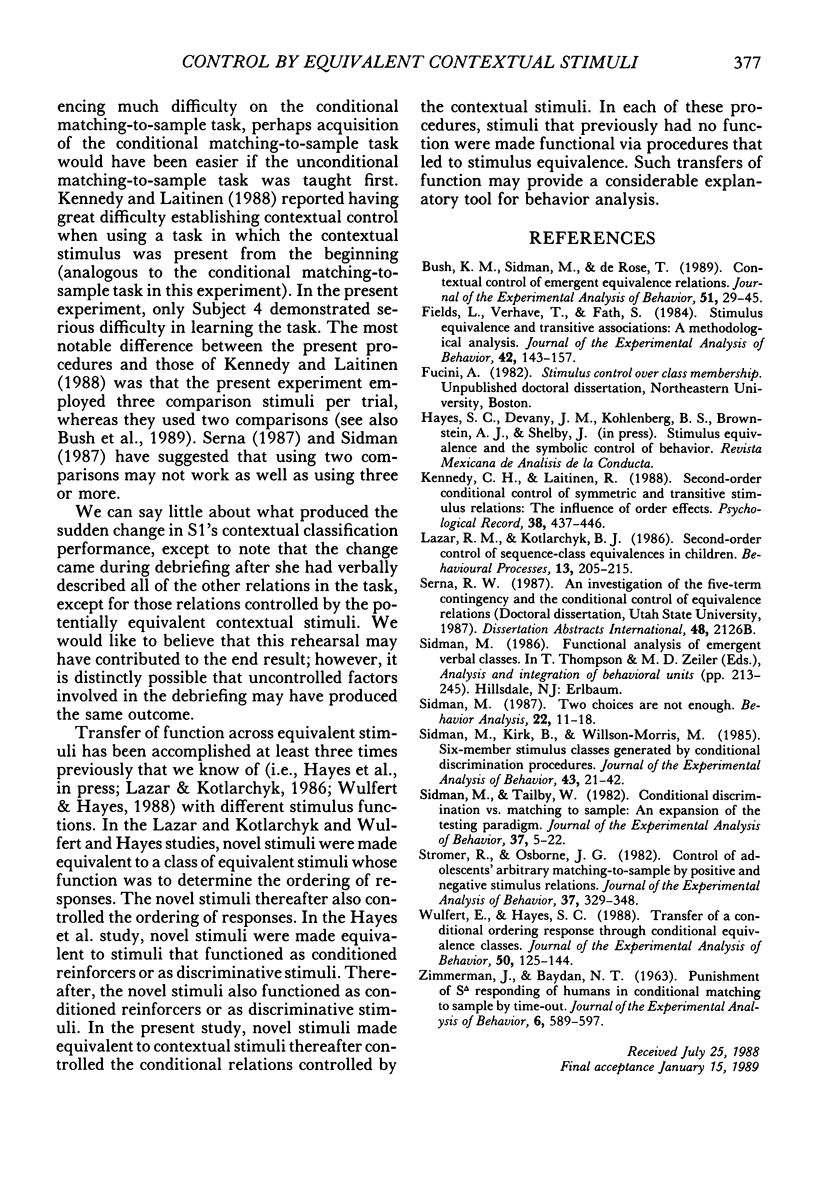
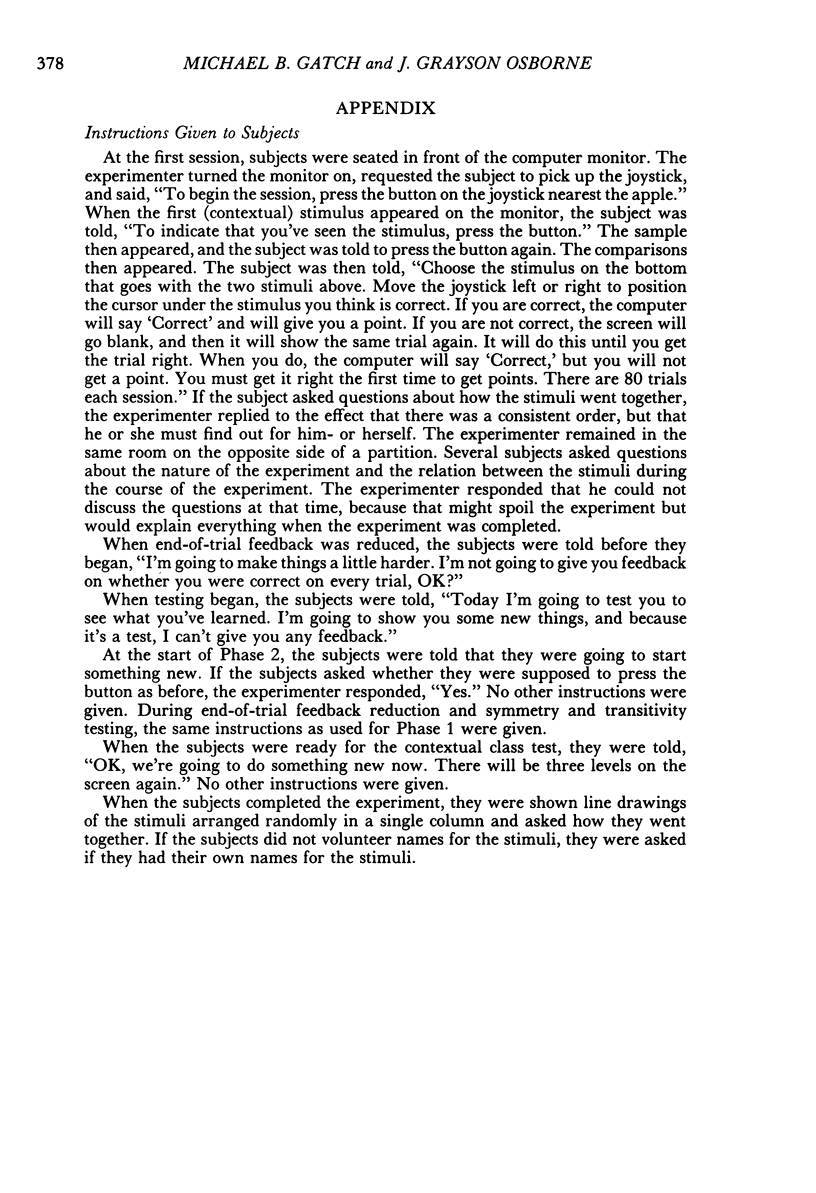
Selected References
These references are in PubMed. This may not be the complete list of references from this article.
- Bush K. M., Sidman M., de Rose T. Contextual control of emergent equivalence relations. J Exp Anal Behav. 1989 Jan;51(1):29–45. doi: 10.1901/jeab.1989.51-29. [DOI] [PMC free article] [PubMed] [Google Scholar]
- Fields L., Verhave T., Fath S. Stimulus equivalence and transitive associations: A methodological analysis. J Exp Anal Behav. 1984 Jul;42(1):143–157. doi: 10.1901/jeab.1984.42-143. [DOI] [PMC free article] [PubMed] [Google Scholar]
- Sidman M., Kirk B., Willson-Morris M. Six-member stimulus classes generated by conditional-discrimination procedures. J Exp Anal Behav. 1985 Jan;43(1):21–42. doi: 10.1901/jeab.1985.43-21. [DOI] [PMC free article] [PubMed] [Google Scholar]
- Sidman M., Tailby W. Conditional discrimination vs. matching to sample: an expansion of the testing paradigm. J Exp Anal Behav. 1982 Jan;37(1):5–22. doi: 10.1901/jeab.1982.37-5. [DOI] [PMC free article] [PubMed] [Google Scholar]
- Stromer R., Osborne J. G. Control of adolescents' arbitrary matching-to-sample by positive and negative stimulus relations. J Exp Anal Behav. 1982 May;37(3):329–348. doi: 10.1901/jeab.1982.37-329. [DOI] [PMC free article] [PubMed] [Google Scholar]
- Wulfert E., Hayes S. C. Transfer of a conditional ordering response through conditional equivalence classes. J Exp Anal Behav. 1988 Sep;50(2):125–144. doi: 10.1901/jeab.1988.50-125. [DOI] [PMC free article] [PubMed] [Google Scholar]
- ZIMMERMAN J., BAYDAN N. T. PUNISHMENT OF S-DELTA RESPONDING OF HUMANS IN CONDITIONAL MATCHING TO SAMPLE BY TIME-OUT. J Exp Anal Behav. 1963 Oct;6:589–597. doi: 10.1901/jeab.1963.6-589. [DOI] [PMC free article] [PubMed] [Google Scholar]


